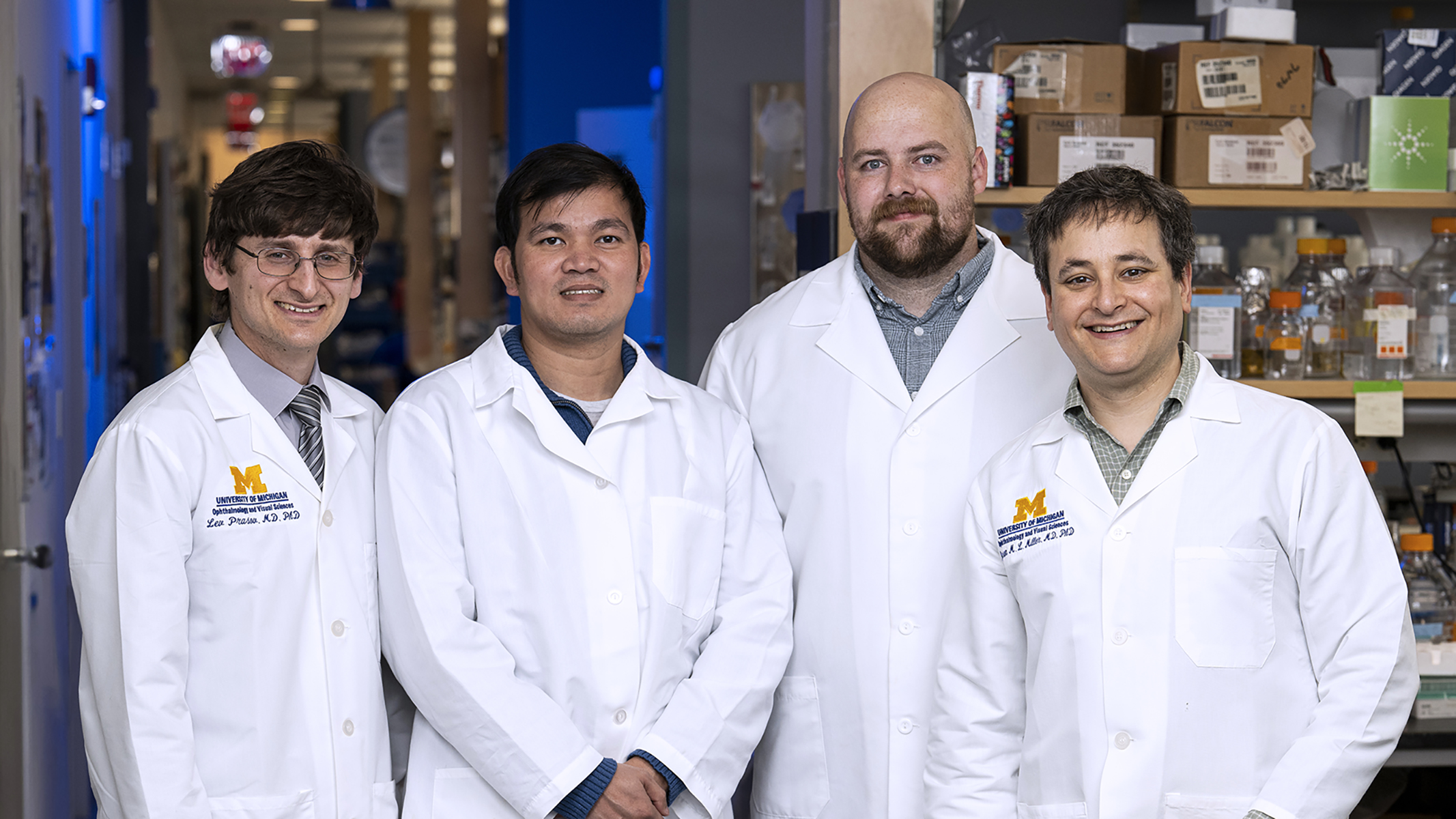
3 minute read
Kellogg Launches Dedicated Ophthalmic Bioinformatics Core
Modern biomedical research requires analysis of complicated datasets in which thousands to millions of datapoints are obtained with cutting edge technology. These are called “omic” datasets—for example, proteomic and genomic analysis of an eye biopsy sample would give a researcher the relative levels of every single gene and protein in the sample—likely representing more than ten thousand datapoints.
The discipline of analyzing such massive “omic” datasets falls to the mighty bioinformatics analyst. Such a person, trained in computer science and statistics, will take this overwhelming number of datapoints and attempt to determine trends and meaning in the complicated dataset.
Before now, Kellogg lacked such a formally trained bioinformatics analyst. Instead, Kellogg basic science researchers have relied on general bioinformatic specialists available to all of Michigan Medicine. While their expertise is vast, these general bioinformatics specialists lack specific knowledge of vision science and the novel features of ophthalmic genes.

Recognizing the clear advantage of a bioinformatics specialist who knows all the quirks and peculiarities of the eye, Kellogg leadership approved the launch of a bioinformatics core in 2024, modeled after similar operations in the U-M Department of Cell and Developmental Biology and the National Eye Institute. Kellogg is now one of the few academic eye centers with this dedicated resource. The core is overseen by Lev Prasov, M.D., Ph.D., Jason Miller, M.D., Ph.D., and Thanh Hoang, Ph.D., and managed by bioinformatician D. Ford Hannum, Ph.D., who joined the team in August.
There are several aspects to Dr. Hannum’s new role. He supports multiple principal investigators on a range of ongoing studies, building the specific data sets and tools they need. He is also helping Kellogg researchers navigate and interpret the exponentially growing body of external data and published omics studies.
“It’s exciting to have this unique vantage point,” he says. “With a view of both the Kellogg research portfolio and the larger ophthalmology research landscape, I can look for patterns, common data sets, and opportunities to consolidate, collaborate and learn from each other’s analyses.”
This core also makes Kellogg even more competitive in the grant space. “More and more submissions require an explanation of how data will be handled,” notes Dr. Prasov. “Adding a bioinformatician to our grant applications answers that question.”
Finally, Dr. Hannum will be Kellogg’s go-to bioinformatics educator. “Increasingly, the scientific questions we ask are addressed using bioinformatics,” Dr. Hoang explains. “We now have an expert to provide bioinformatic support and train our faculty, post docs and graduates to gain the knowledge and skills to perform these analyses themselves.”
“We are thrilled to add this discipline to our research arsenal, and to have Dr. Hannum on our team,” says Dr. Miller. “With the expertise to sort through the mountain of data available to us, we can uncover things we didn’t even know we were looking for. It’s truly a game-changer for Kellogg.”

